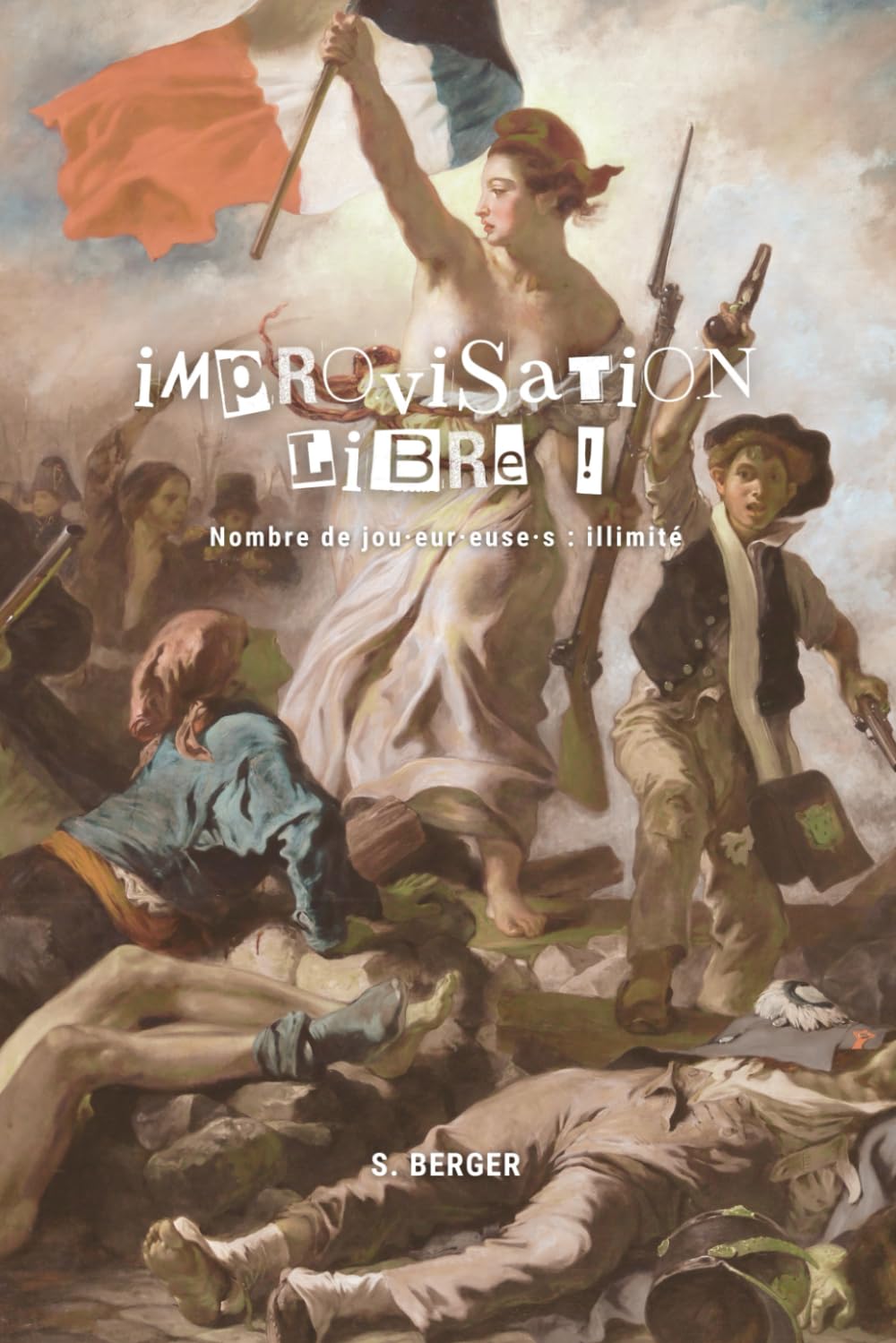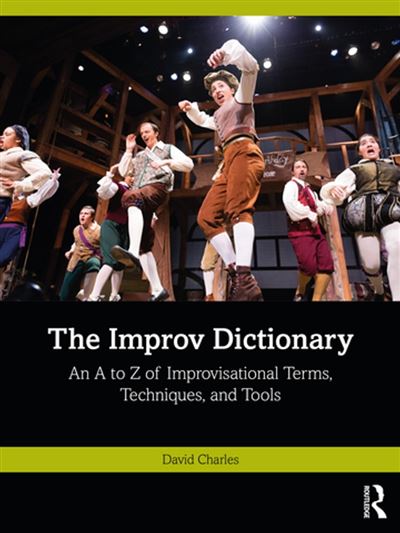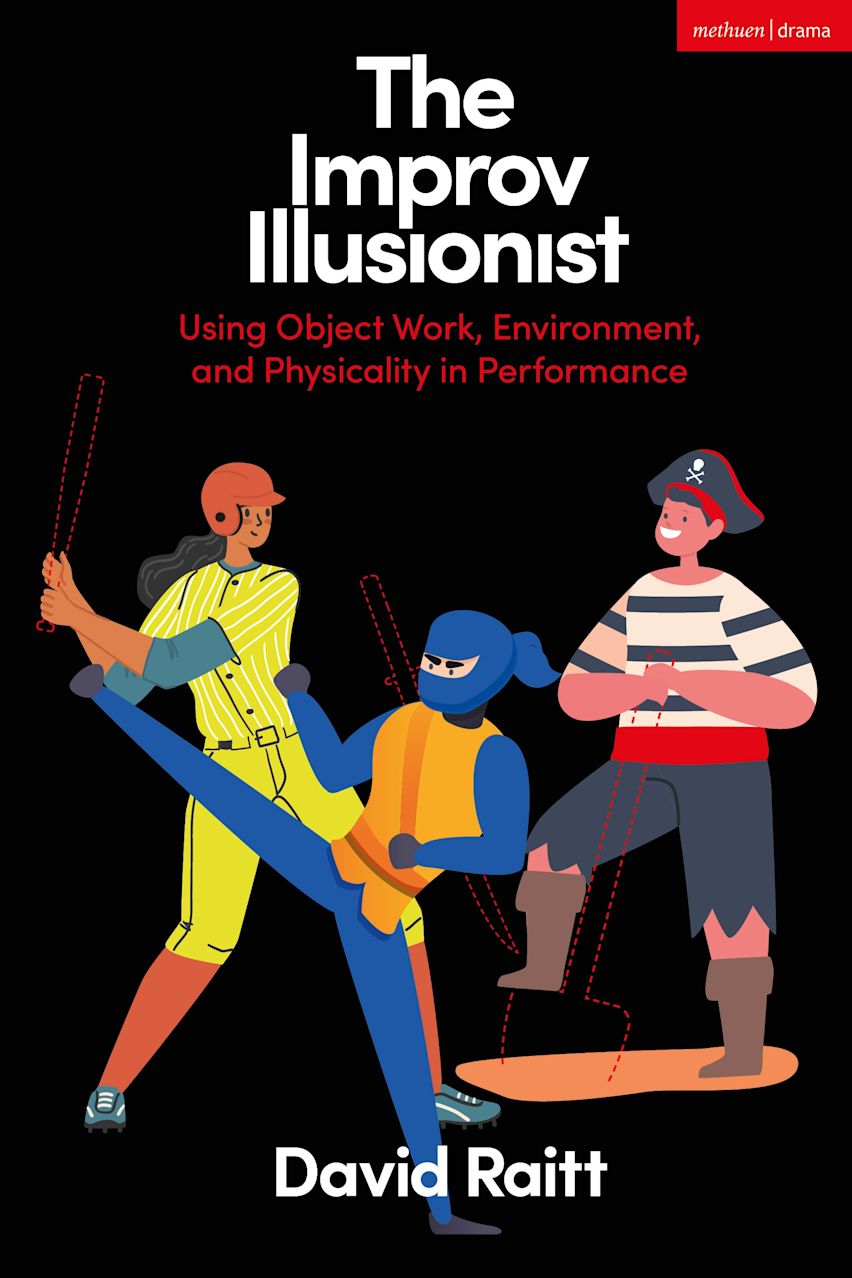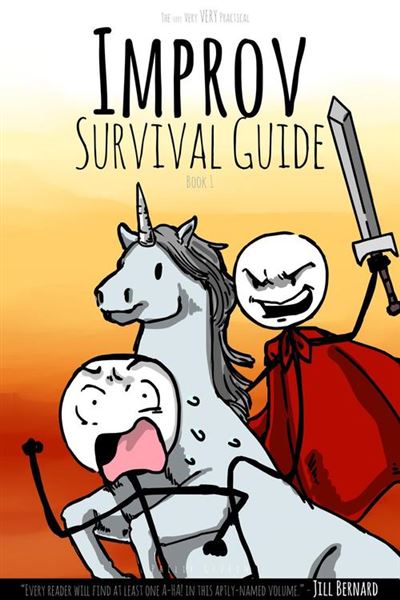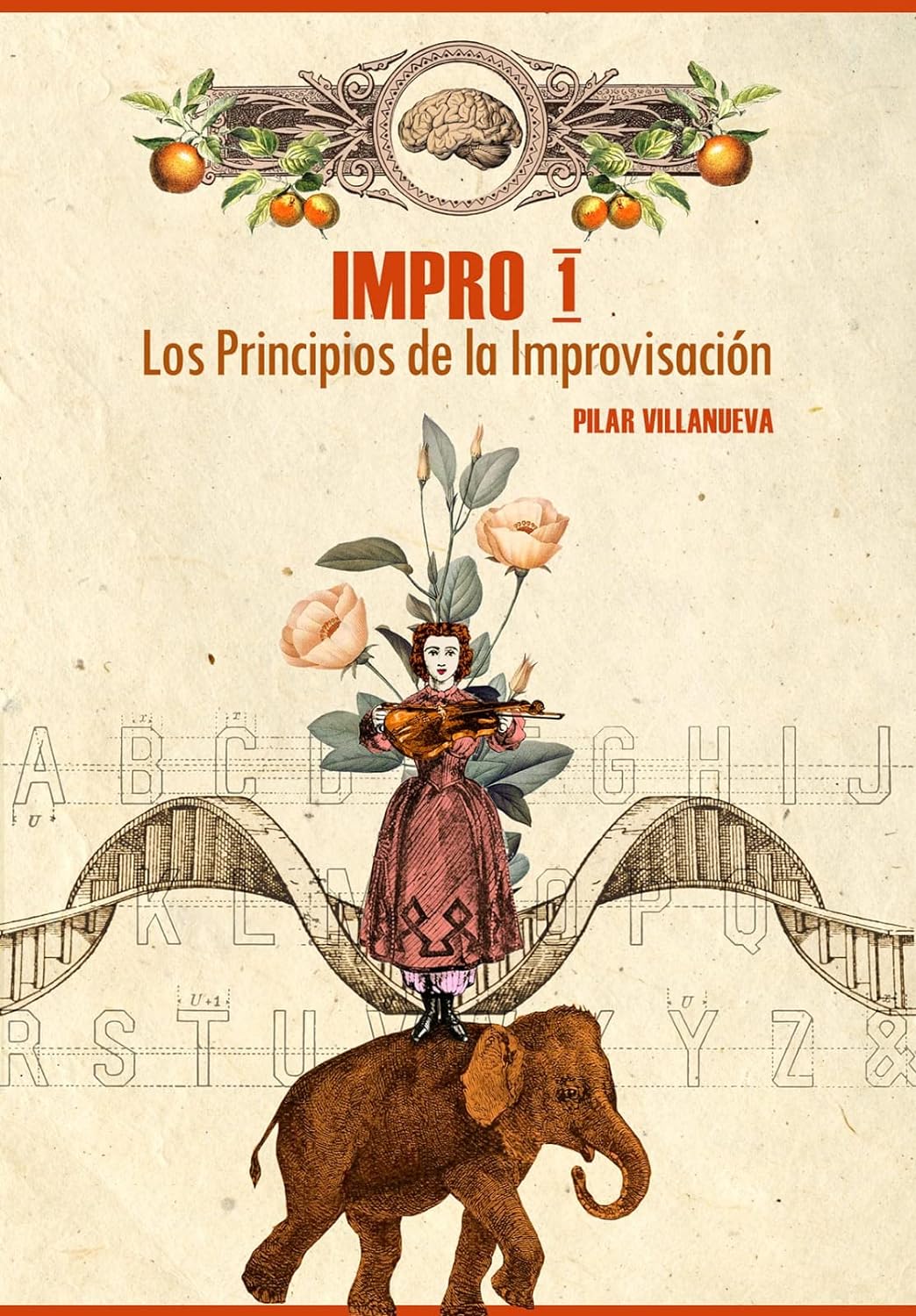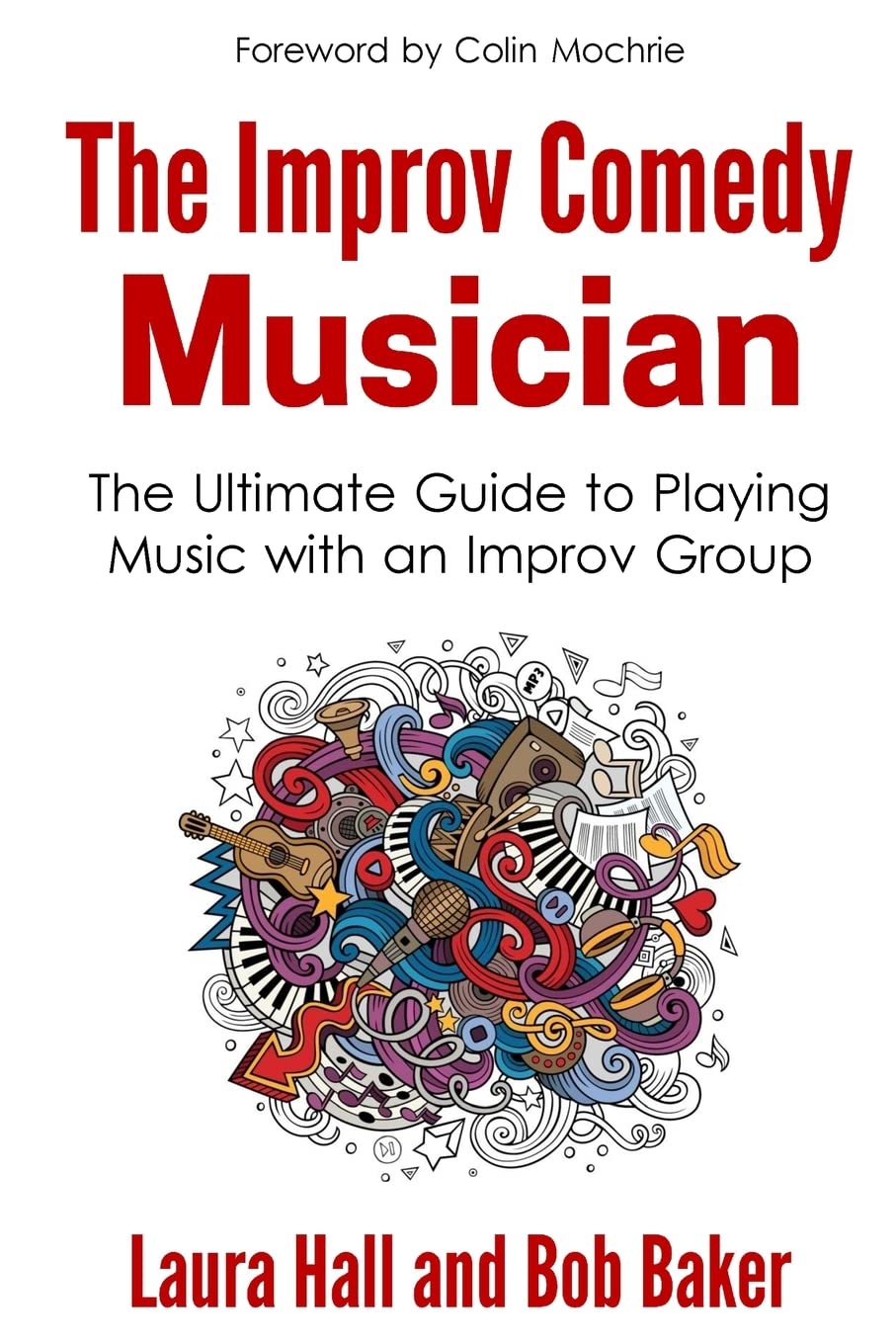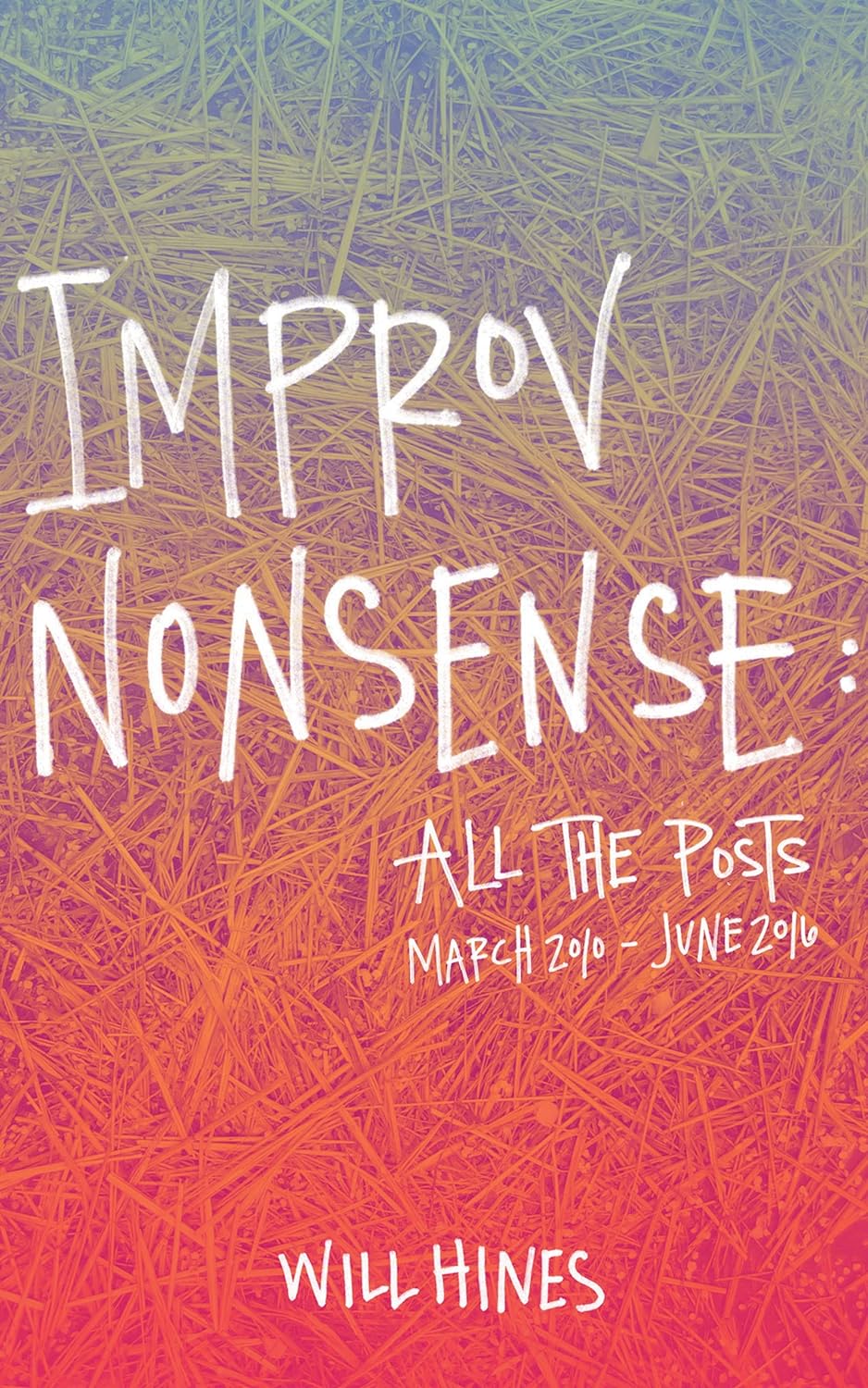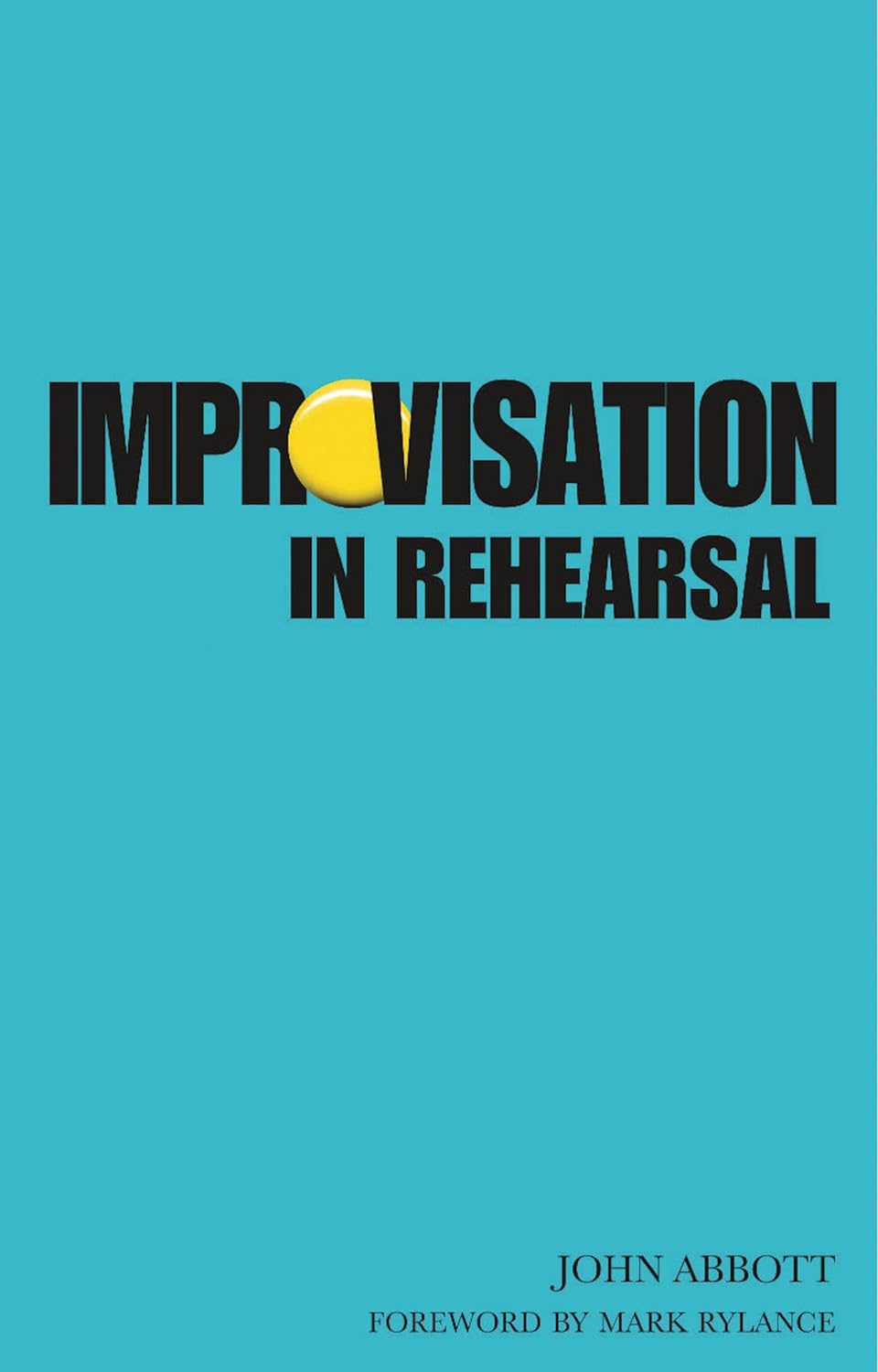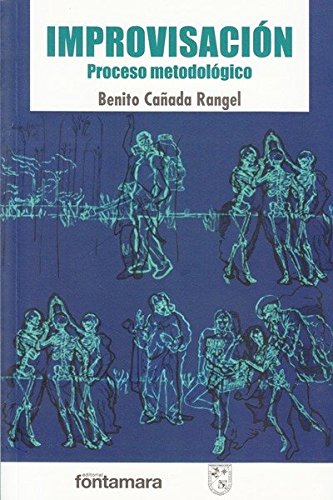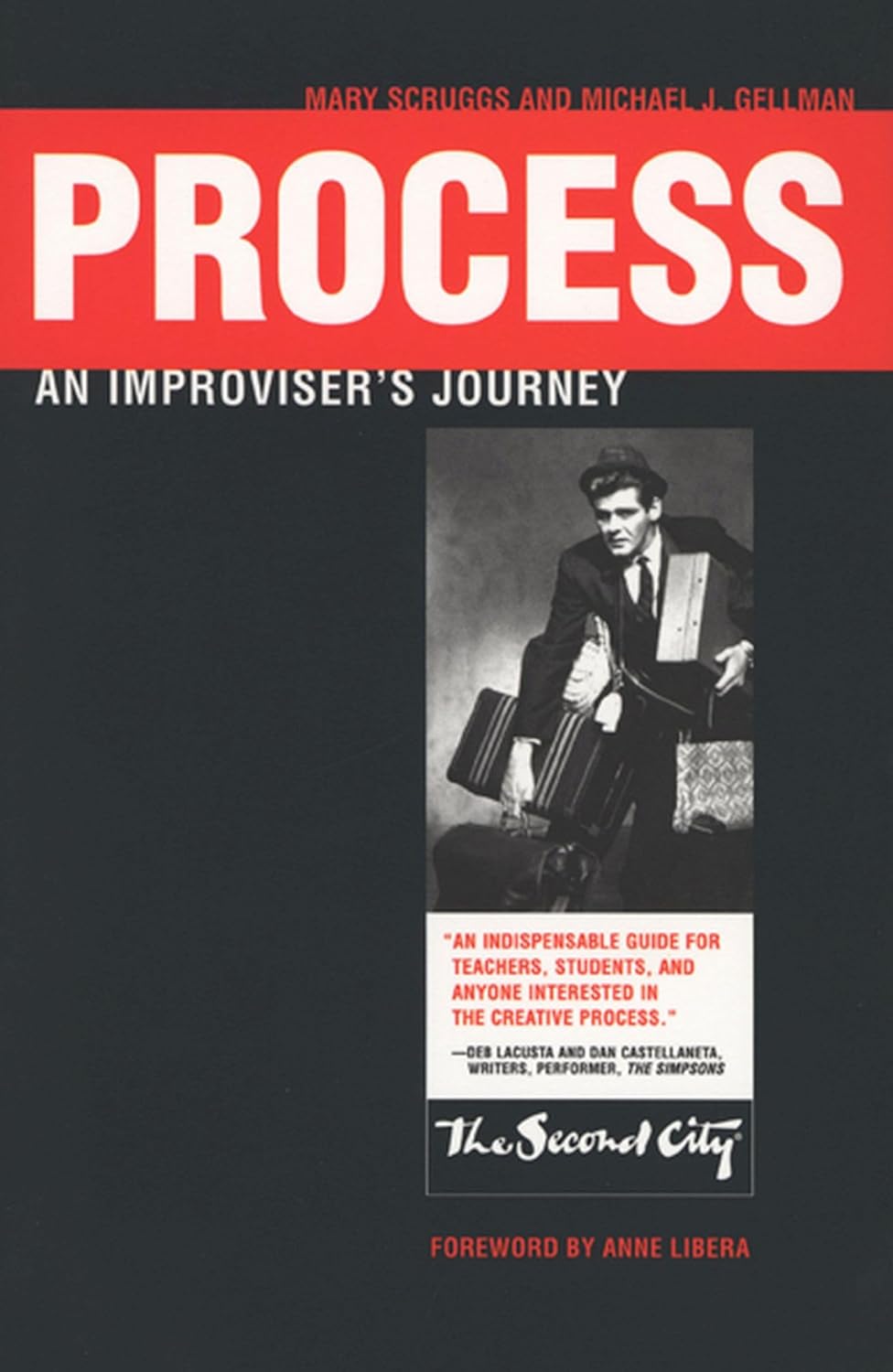Dive into the heart of the theatrical revolution with “Free Improvisation!”, a bold essay that reveals the mechanisms and formidable political potential of theatrical improvisation. With this plea for a free, vibrant, welcoming, and subversive theater, the author invites us to rethink the dramatic art around the values and virtues of improvisation. Whether you are an artist seeking new creative horizons or a citizen eager to rethink the foundations of society, “Free Improvisation!” takes you on a captivating intellectual and artistic journey, where freedom is the rule and imagination the only limit.
Improv books
Here you will find the most complete list of theatrical improv books, whether they are improv games, long-form improv or essays on the state of improv.
An A to Z of Improvisational Terms, Techniques, and Tools The Improv Dictionary: An A to Z of Improvisational Terms, Techniques, and Tools explores improvisational approaches and concepts drawn from a multitude of movements and schools of thought to enhance spontaneous and collaborative creativity. This accessible resource reveals and interrogates the inherited wisdoms contained in the very words we use to describe modern improv. Each detailed definition goes beyond the obvious clichés and seeks a nuanced and inclusive understanding of how art of the moment can be much more than easy laughs and cheap gags (even when it is being delightfully irreverent and wildly funny). This encyclopedic work pulls from a wide array of practitioners and practices, finding tensions and commonalities from styles as diverse as Theatresports, Comedysportz, the Harold, narrative long-form, Playback Theatre, and Boal’s Theatre of the Oppressed. Entries include nuanced definitions, helpful examples, detailed explorations of the concepts in practice, and framing quotes from a leading practitioner or inspirational artistic voice. The Improv Dictionary offers valuable insights to novice improvisers taking their first steps in the craft, seasoned performers seeking to unlock the next level of abandon, instructors craving a new comprehensive resource, and scholars working in one of…
The Improv IllusionistUsing Object Work, Environment, and Physicality in Performance Object work, environment and physicality are essential for improvisational theatre. Skilled improvisers can draw audiences into the performance by helping them see things that aren’t there. The Improv Illusionist is the first book dedicated to physical improv. It reveals why these skills are so important, how to fix bad habits that develop over time and practical techniques for being more physical on stage. The book features over 50 exercises to help improvisers develop their skills through solo and group work. Instructors will also find notes and tips for teaching physical improv.Improvisers of all ages and experience levels will learn how to: * become more playful through exploring physical activity;* eliminate miscommunication with other players by adding precision to object work;* get new ideas for scenes by exploring the environment and activities;* develop an eye for real-world detail and how to reproduce it in improv;* add more visual flair to scenes;* stay safe, both physically and emotionally, in shows, rehearsals and classesEven the most seasoned improv performers often struggle to be more physical, so this book fills an important niche in improv actor training.
When I first saw improv on stage I *wanted* it. I had never seen anything or anyone so powerful. Envy, desire, and lust filled me. I was terrified and delighted by the mere *thought* of going on that stage. And boy oh boy I wanted that stage. I was determined. I was hooked.
This text explores the principles that govern the operation of the theatrical improvisation technique, beginning by framing it within the specialties of acting. The purpose of this book is to make accessible to anyone who wants to become familiar with the technique, some of the bases to start improvising. Masterfully written by Pilar Villanueva (ENAT / INBA and Faculty of Philosophy and Letters, UNAM), who has dedicated her life, among other things, to the in-depth study of theatrical improvisation, dramatic theory and research on styles in acting and improvisation. PILAR VILLANUEVAActress. She doesn’t know how to do much else. However, she has taught for twenty years because she is absolutely passionate about studying and it is well known that students are great teachers. She does improvisation theater for a long time. She has even directed some shows. Thus she has been able to get to know other countries, doing Impro in very diverse formats and giving workshops. In “Sola” her one-woman show, she improvises in the manner of classic theater and film authors. She is also a developing homemaker. Her and her faithful admirer of her son.
The Improv Comedy Musician: The Ultimate Guide to Playing Music with an Improv Group Learn musical improv from Laura Hall of “Whose Line Is It Anyway?”Are you a musician who performs with an improv comedy group? If so, this book is for you! You’ll also greatly benefit if you are a music director, improv team leader, improv teacher or coach, improv actor or singer, or just a hardcore Whose Line fan. This book is an opportunity for me to share knowledge gained from my years of improv experience. You’ll learn how I do what I do on Whose Line is it Anyway (plus get some insider stories about the show!) And you’ll get tips and pointers on how to play for live improv shows, play in different styles, accompany improvised songs, know how to approach long and short form, improvise musicals, be a valuable team player, and lots more.
Improv Nonsense: All The Posts This is a book about long-form improv, the art of making up comedy scenes as you go (meaning no script) on a stage. Improv Nonsense was a critically acclaimed blog about long-form improv, written by Will Hines, a teacher and performer from the Upright Citizens Brigade Theatre. The blog ranged from Will’s off-the-cuff musings like “New students sure do like to use the name ‘Janice’” to long, detailed essays like “Why are there fewer women then men on improv teams?.” It was sharp, opinionated, made no effort to include the newcomer, interesting, friendly, helpful and often completely wrong. Six years of posts, almost 600 pages of stuff. This book can be obtained in digital format for less than €10
John Abbott, author of The Improvisation Book, explains how theatre directors at every level can use improvisation in the rehearsal room. Foreword by Mark Rylance. ‘Improvisation can be used as part of the creative process of rehearsing a play. It can be a fabulous tool for exploration and discovery. It can strengthen the actor’s commitment to their character. And it can create an environment of confidence and spontaneity.’ Packed with useful exercises and improvisation scenarios, and examples from a wide variety of plays, Improvisation in Rehearsal reveals how improvisation enriches and enlivens the creation of characters, back-stories, relationships, shared histories and emotional lives. The book also demonstrates how improvisation can be used as a powerful tool in the foundation of a strong company, and when searching for the hidden depths and dynamics in a scene. Building on his own experience as an actor, director and teacher, Abbott writes with clarity and an infectious enthusiasm which will motivate directors to try the techniques for themselves. As Mark Rylance says in his Foreword, this book ‘will inspire and delight its readers’.
The content of this book is the product of a research process: the object of study is the actor and his creative process for the construction of the character. It is determined that it is during the rehearsal period when the actor lives his creative process, and it is the improvisation the tool that is used to achieve the objective, in particular of the actor when creating his character, and in general of all the other actors and specialists in stage languages, together with the director, to achieve stage dramaturgy as a whole. In these pages the reader will find a methodological proposal that will favor the creation of the character through improvisation, in which he will search, find and define the actions of his character, allowing him the internal and external characterization of the role. We know that this book will be useful to all those who dedicate themselves to the performing arts, professionally or as amateurs, to students and acting teachers; but also, we invite readers in general to learn about the creative mechanisms that an actor faces to build his character.
Process: An Improviser’s Journey Process: An Improviser’s Journey is an invaluable resource for mastering improv. Author, teacher, and improviser Michael Gellman was given a mission by famed improv coach Del Close: “[T]o create improvised one-act plays of literary quality from scratch.” Already steeped in the world of improvisation, he took it upon himself to do this, in the form of a class for other improvisers in which they would build the skills necessary to execute such a seemingly tall order. Scruggs and Gellman’s book, modeled after Stanislavski’s timeless An Actor Prepares, follows a fictional young actor taking Gellman’s real-life class. Scruggs and Gellman introduce readers to Geoff, who has just moved to Chicago to pursue acting. He undergoes the standard trials of audition and rejection before he takes the advice of a fellow actor and turns to improv classes at Second City. At first, Geoff thinks improvisation is about laughs and loosening up, but he soon learns that it is a powerful tool as well as an end in itself. Through Geoff’s eyes, the book introduces readers to key tenets of improvisation: concentration, visualization, focus, object work, being in the moment, and the crucial “yes, and.” His experiences with the…
